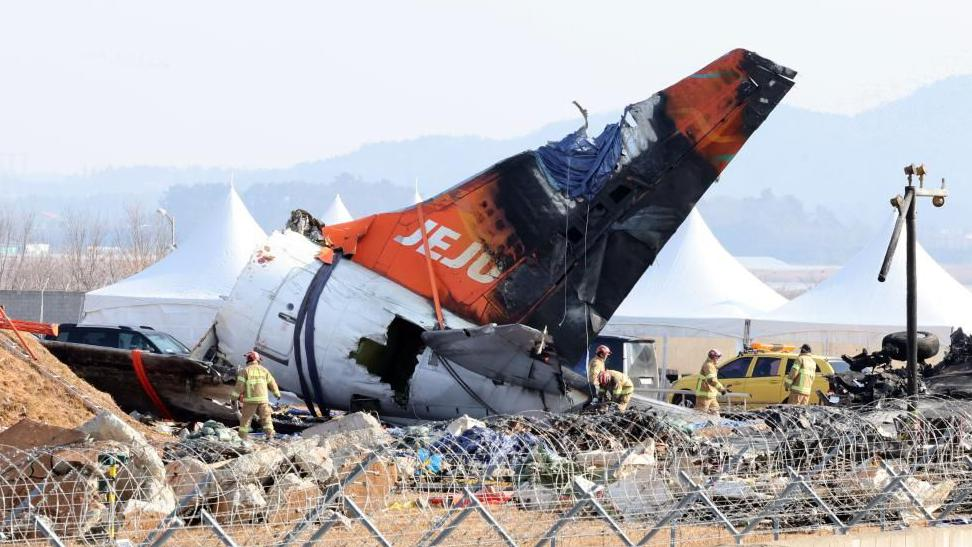
Deadly accident claims 179 lives
On December 29, a Jeju Air Boeing 737-800 flying from Thailand to Muan, South Korea, tragically experienced a crash, resulting in the deaths of 179 out of the 181 passengers and crew members onboard. The plane belly-landed and exploded into flames after hitting a concrete barrier at the end of the runway, marking South Korea’s worst aviation disaster to date.
Investigators identify bird strike as a factor
A preliminary investigation released Monday revealed that bird blood and feathers were found in both engines of the ill-fated aircraft. Investigators from South Korea and the United States are examining multiple potential causes, including a bird strike, faulty landing gear, and the presence of a runway barrier.
“The pilots identified a group of birds while approaching runway 01, and a security camera filmed HL8088 coming close to a group of birds during a go-around,” the report noted, referring to the aircraft’s registration number.
DNA analysis confirmed that the feathers and blood belonged to Baikal teals, migratory birds that frequent Korea during the winter months.
Engines and black boxes under scrutiny
Although the engines were found with bird remnants, the report did not clarify whether they had stopped functioning before the crash. Additionally, investigators revealed that both the cockpit voice recorder and flight data recorder ceased operation four minutes before the disaster, leaving a critical gap in data. The cause of this malfunction remains undetermined.
Questions about runway safety
The Jeju Air plane collided with a concrete embankment during its landing attempt, raising concerns about the appropriateness of such barriers at runways. In response to the crash, South Korean authorities announced plans to replace these concrete barricades with “breakable structures” at airports nationwide to prevent similar tragedies.
Experienced flight crew among the victims
The captain of the aircraft had over 6,800 flight hours, while the first officer logged 1,650 hours. Tragically, both pilots perished in the crash, along with all passengers. Only two flight attendants survived the disaster.
As investigations continue, this tragedy serves as a stark reminder of the complex interplay of factors that can lead to aviation accidents, prompting renewed scrutiny of air safety protocols.






